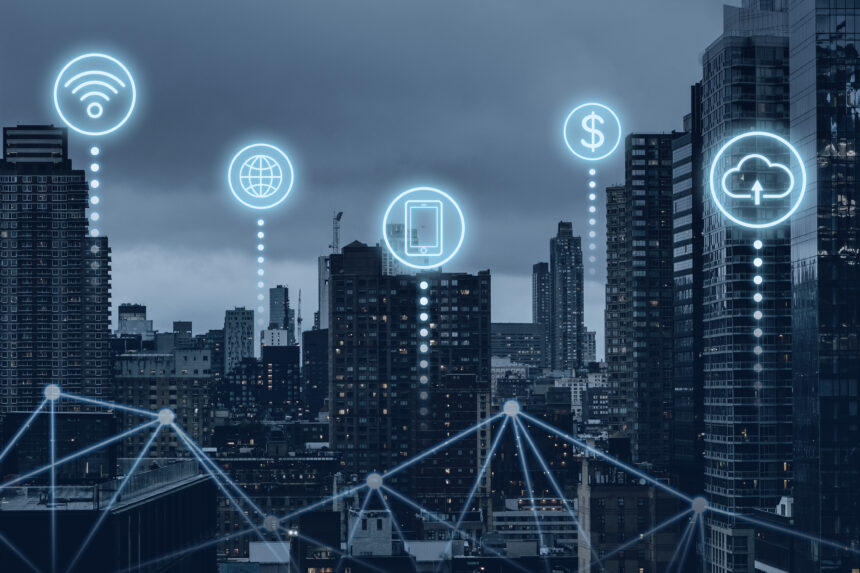You can’t apply for a job, see a doctor, or finish homework without a connection. If water and power are utilities, why isn’t internet access treated the same way?
Why “Internet Access” Is Being Framed as a Right
The phrase sounds radical until you stare at a weekday. Work happens in browsers, school in learning portals, healthcare in video calls, and public life in digital services. If you’re offline, you’re not just inconvenienced—you’re excluded. That’s why the idea of a guaranteed connection has shifted from a tech wish to a civic conversation about equity, opportunity, and participation.
Globally, the concept already has a name: the right to internet access. The argument is simple: when the internet becomes the primary channel for essential services, access stops being a luxury and starts looking a lot like a civil right.
“Equal access to jobs and school starts with a stable connection — this should’ve happened years ago.” — a TikTok user
What Happens When a Major City Declares It a Right?
Declaring a right is easy. Delivering it—block by block, apartment by apartment—is the hard part. Cities that make this promise have to transition from pilot projects to persistent infrastructure, from hot spots to full-stack networks that actually reach the people who need them most.
Inside NYC’s Playbook — From Vision to Buildout
New York’s approach is blunt and practical: map the digital divide, crowd in multiple providers, and use public assets (rooftops, poles, fiber, rights-of-way) to lower the cost of serving low-income buildings. The New York City Internet Master Plan lays out the blueprint—shared infrastructure, open access where possible, and targeted affordability so the price tag isn’t the barrier. It’s not just “free Wi-Fi in parks.” It’s treating connectivity like city plumbing.
Barcelona’s Digital Rights Approach
Barcelona frames connectivity inside a broader charter of digital rights: access, privacy, inclusion, and transparency. The city coordinates public Wi-Fi, municipal fiber, and partnerships with social programs that put devices and digital training into residents’ hands. For the rights-and-governance lens, explore Barcelona’s Cities Coalition for Digital Rights to see how access is tied to human-centered tech policy.
“Rights are great; enforcement is better. Show me uptime and real speeds.” — an X user
Infrastructure Reality Check — Can We Actually Deliver It?
The short answer: yes, but not with one tool. The last few miles of the internet are a patchwork of fiber, cable, fixed wireless, and mobile networks. Universal service means combining them smartly and targeting gaps, not hoping one technology blankets everything.
Dead Zones, Last-Mile, and Affordability
Even in wealthy countries, there are pockets where service is slow, absent, or overpriced relative to incomes. That’s where municipal leverage matters. Cities can loosen bottlenecks by opening ducts and poles, pre-permitting shared sites, and incentivizing service to underserved blocks. For a reality check on coverage gaps (and why the last mile is stubborn), BigTrending’s look at rural dead zones and 5G coverage shows how geography, power, and economics conspire to leave people behind.
Backup Paths: Satellites Meet Smartphones
Redundancy is part of any right. If a storm snaps fiber, you still need a connection. That’s where hybrid models—terrestrial plus satellite—become insurance against outages and hard-to-reach areas. Direct-to-device constellations are early but promising, giving phones a fallback link when towers or cables fail. To see how these bridges are forming, read our primer on 5G satellite phones as a bridge.
“Love the idea, but I want transparency on who sees my data on public Wi-Fi.” — a Redditor
The Pulse of the People: Online Reactions
Open any comment section and you’ll see the fault lines.
- “Finally, a step towards equal opportunity for all! The internet is no longer a luxury; it’s a necessity.” — a TikTok user
- “Hope this doesn’t mean more ads shoved down our throats. Just give us the internet, not the headaches.” — a Redditor
- “Can we talk about the security implications of this? Free Wi-Fi is great until someone hacks into your life.” — an X user
Beneath the snark is a consensus: people want access, but they want it to be trustworthy—fast enough for school and work, secure enough for healthcare, and priced so a bad month doesn’t knock them offline.
Why Access Matters: School, Work, Health
This isn’t just about streaming faster.
- Education: Homework portals, lecture videos, and group projects all assume a connection. When internet access is shaky, absences and late submissions rise, and achievement gaps widen.
- Employment: Applications, training, scheduling, and gig platforms are online. Reliable internet access expands the radius of jobs you can realistically do.
- Healthcare: Telemedicine isn’t niche anymore. Stable connections let clinicians monitor chronic conditions, handle follow-ups, and keep ERs for emergencies.
Treating internet access like a right is a lever for social mobility, not a perk.
The Real Costs: Who Pays, and How?
Networks cost money to build and maintain. Someone funds fiber routes, trenching, radios, spectrum, routers, and the teams that keep them alive through heat waves and blizzards. Rights-based models don’t erase costs—they distribute them differently.
- Public infrastructure, private service. Cities invest in common assets (conduit, fiber backbones, rooftops). ISPs compete to light them.
- Targeted subsidies. Means-tested vouchers reduce the monthly bill for qualifying households while keeping providers solvent.
- Performance-based contracts. Public funds tie to uptime, coverage, and affordability metrics, with clawbacks if targets aren’t met.
- Device + skills bundles. The best programs ship laptops or hotspots and include digital literacy training, so “access” is usable on day one.
Security and Privacy: Building Trust by Design
Universal networks widen the attack surface, so security can’t be an afterthought.
- Encrypted by default. Public networks should require modern encryption, not wide-open SSIDs.
- Minimal data collection. Captive portals that harvest extra data trade privacy for convenience; cities should publish exactly what’s collected and for how long.
- Transparent audits. Third-party testing of speeds, latency, uptime, and security posture keeps the promise honest.
- Clear escalation paths. When a network fails or a breach is suspected, residents need prompt, human support—ideally with multilingual options.
Global Benchmarks — Who’s Already Acting?
Cities aren’t inventing this in a vacuum; some countries already codified the idea.
Finland’s Baseline Broadband Law
Finland became an early model when it guaranteed a baseline connection for every citizen, then ratcheted expectations up over time. The policy wasn’t just symbolic; it forced upgrades, competition, and coverage discipline. If you want the origin story, read how Finland made broadband a basic right and used it to push the market forward.
Estonia’s Digital-State Playbook
Estonia treats the internet like a civic fabric, enabling e-government at national scale. When your taxes, healthcare records, and business registrations flow online, internet access becomes the doorway to the state. It’s a powerful case study for how rights and digital services reinforce each other.
Measuring the Promise: KPIs That Actually Matter
If internet access is a right, we should track it like a utility:
- Coverage: Percentage of households with a line of service available today (not “theoretical”).
- Adoption: Percentage actually connected at home, not just “covered.”
- Affordability: Price as a share of income; target thresholds that don’t force tradeoffs with rent and food.
- Performance: Median real-world speeds and latency during peak hours, not marketing numbers.
- Reliability: Uptime and mean time to repair.
- Equity: The gap in adoption and performance between low-income and high-income neighborhoods shrinking quarter over quarter.
Publish it all on an open dashboard. Rights are only real when they’re measurable.
What to Watch Next
- Municipal assets opening up. More cities letting multiple ISPs share ducts, poles, and rooftops—lowering the cost to serve tough blocks.
- Hybrid networks. Fiber where it’s dense, fixed wireless where it’s sprawling, satellite for resilience.
- Affordability 2.0. Post-subsidy models that keep monthly bills durable even when federal programs fluctuate.
- Privacy standards. Cities adopting strict data-minimization policies for public networks and enforcing them in vendor contracts.
Bottom Line
Declaring internet access a basic right is a bold headline. Delivering it is urban engineering, digital policy, and kitchen-table economics all at once. The cities that will win aren’t the ones with the flashiest hotspots; they’re the ones that wire equity into the network—reliable service, transparent prices, strong privacy, and honest metrics—so residents can actually live online, not just log on.
FAQ
Which U.S. cities are leading the charge in declaring internet access a right?
New York City is a bellwether, with the New York City Internet Master Plan setting out concrete steps for universal service. Other metros are testing similar models, but NYC’s scale makes it the headline case for treating internet access like a utility.
What are the benefits of recognizing internet access as a basic right?
It shrinks gaps in education, employment, and healthcare. Guaranteed internet access turns portals and telehealth from privileges into everyday tools—especially for low-income households.
What challenges do cities face in providing free or low-cost access?
Top issues include cybersecurity on public networks, long-term funding for maintenance, and last-mile buildouts. Publishing uptime and adopting privacy-first policies help make internet access trustworthy.
Are there international examples of countries declaring internet access a human right?
Yes—Finland legally guaranteed baseline service, and Estonia embedded internet access into national e-government. Their examples show policy can move markets.
Will mobile alone solve universal access?
Mobile helps, but home internet access with consistent speeds and low latency is essential for school, remote work, and telemedicine. Most universal plans blend fiber, fixed wireless, and mobile, with satellite as backup.









